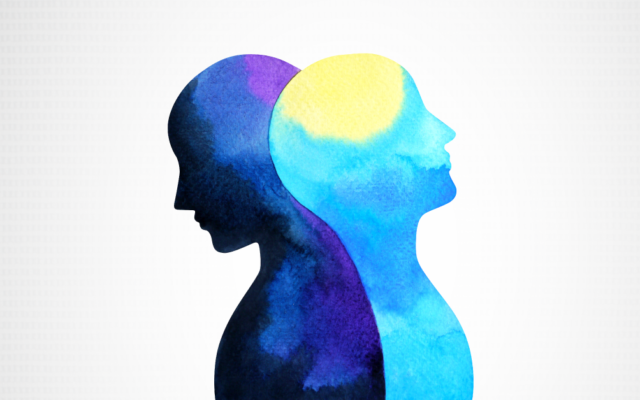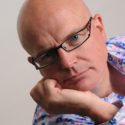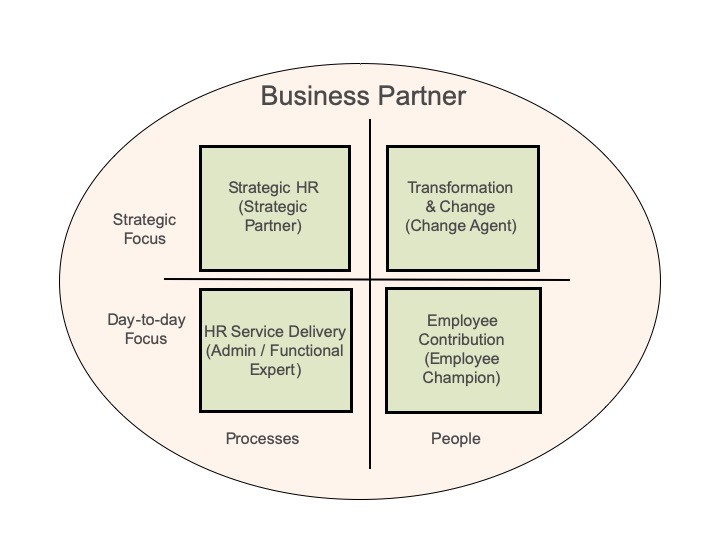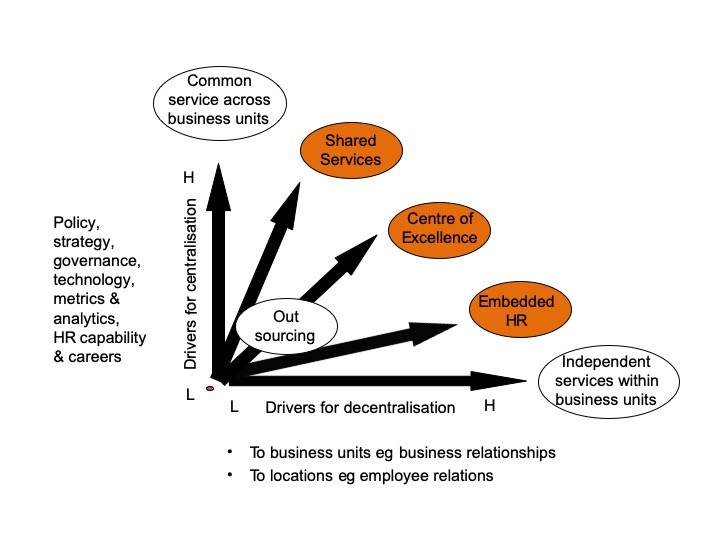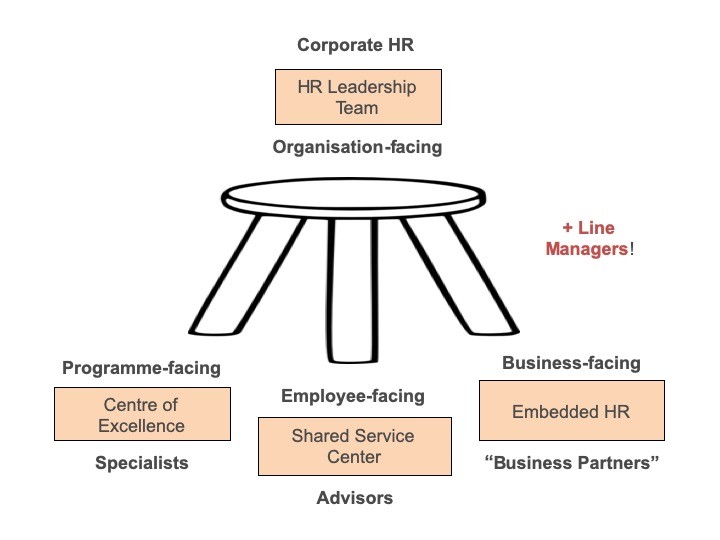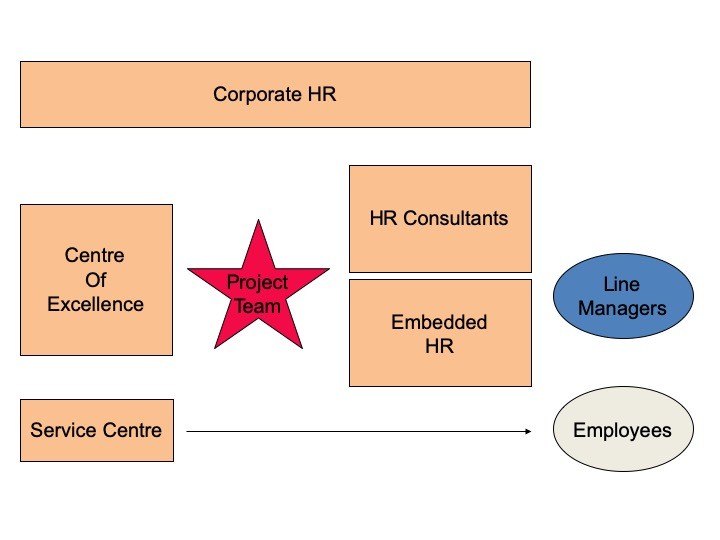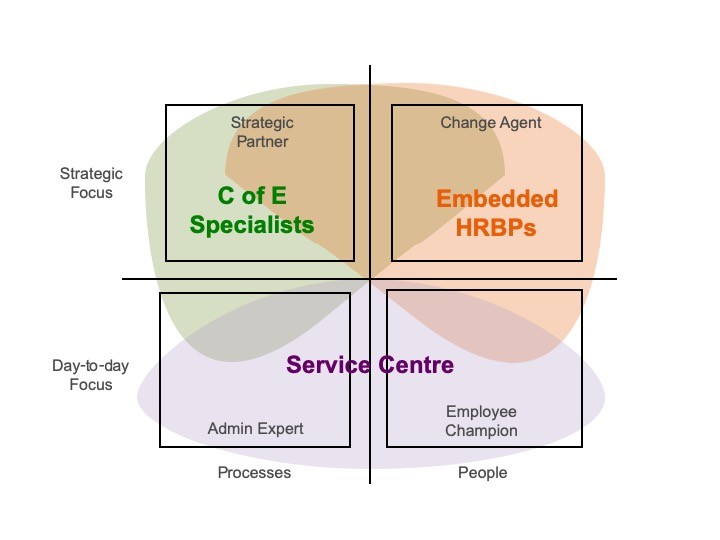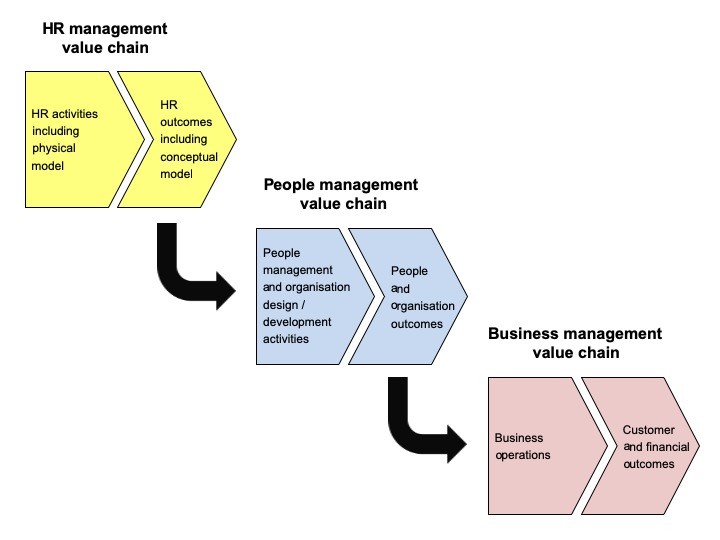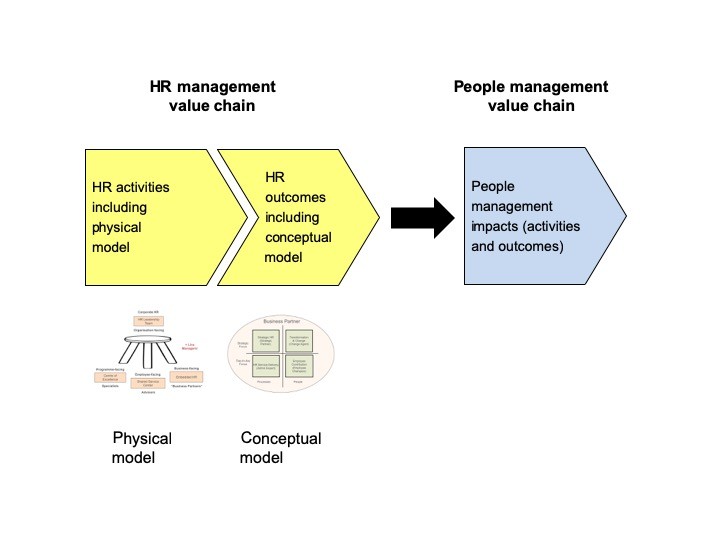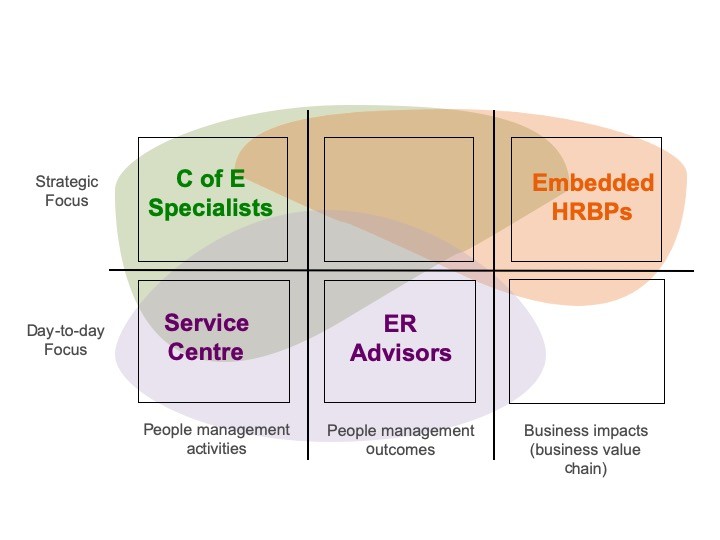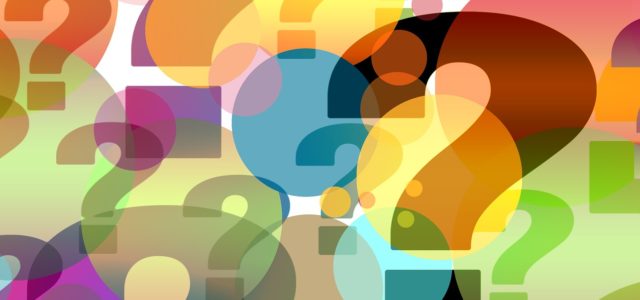During the last month, I’ve been reviewing new organisation models and have shown how the four main organisation forms – the traditional ones (vertical functions and horizontal teams) and newer, people-centred ones (communities and networks of performance) relate to each other.
I’m shortly going to share a new article in this month’s HR Magazine which applies the same logic to the HR organisation, resulting in a new Melded Network HR Model.
However, I’d like to show you how you can get to the same place using the same type of analysis used by Dave Ulrich in developing what became known as the Ulrich Model.
Dave doesn’t use this type of analysis any more, preferring a broader, more discursive approach (HRBP 2.0, Auditing your HR department, Your point of view). And I agree that this broader range of elements is important (especially Relationships over Roles – see The Social Organization).
However, I still think the analysis can be useful if updated appropriately.
The strategic importance of people has been growing since the 1990s, marked in particular by McKinsey’s War for Talent report in 1998. The strategic importance of HR has been increasing in tandem with this growing importance of people.
The way that the HR organisation needs to respond to this strategic remit is shown in the ‘Ulrich model’ from 1997. This explains that HR needs to focus on the future strategic opportunities in a business (ie the strategic partnering role), as well as today’s current operations (the admin / functional expert role), and also on the people in the business (the change agent and employee champion or advocate roles). HR acts as a business partner when all four of these roles are delivered effectively. This is what I call Ulrich’s conceptual model or outcomes model because it describes what HR is now trying to achieve.
Business Partner Conceptual Model (source: Dave Ulrich)
Combined with an understanding of challenges around centralisation and decentralisation, essential in a strategic approach, this leads to what it also often called the Ulrich model, also known as the three-legged stool, which describes the archetypal HR organisation or operating model. This includes the common roles of the centre of excellence / COE (specialists), service centre (advisors) and embedded HR practitioners (working in the job which is often called business partner). I call this Ulrich’s physical model because it demonstrates how HR can often organise itself to deliver as a business partner.
Centralisation and Decentralisation (source: David Ulrich)
Physical Model / The Three-Legged Stool (based on Dave Ulrich)
HR functions increasingly involve a broader number of roles / legs, the most popular probably being HR consultants, operating at the same level as HR business partners but not tied to a particular area of a business, enabling them to be moved around to meet strategic or operational needs. Also, the focus of HR delivery is moving from individuals to teams, and Dave therefore suggests that project teams have been becoming increasingly important parts of HR, with the function starting to look more like a professional services firm:
Role of HR Project Teams (source: David Ulrich)
Although it is not shown in the figure above, another common role is that of the employee relations advisor, working in a specific location and taking care of local ER issues. This stops embedded business partners having to do so much ER work, helping them focus on more strategic issues, and can mean they do not need to do so much travelling.
Importantly, there is not a one-to-match between the conceptual and physical model. These do look like a closer match if ER advisors are added to this model bottom right. However, the idea is to enable people to focus towards particular roles not to create a complete separation between them. This does, however, lead to a large degree of overlap and potential for conflict if this is not managed.
Links Between Conceptual and Physical Models
The physical model is one of the activities which produce the outcome of the conceptual model (or the performance in the roles described by this model) in the HR management value chain. This HR value chain echoes and supports the way we perform people management and other activities to produce the outcomes (often described as human, organisation and social capital) in the people management value chain. And also our use of business operational activities to produce customer and financial success in the business management value chain.
HR, People and Business Value Chains
This is important to understand as Dave suggests we need to focus less on activities and more on outcomes and it is interesting to note McKinsey’s focus has moved from activities (eg their 7S organisation model) to outcomes (especially organisation health – their term for the outcomes in the people management value chain). This focus needs to continue as we develop new approaches to HR business partnering too.
The next diagram shows how the physical and conceptual models relate to the activities and outcomes in the HR value chain (figure 7). Here, the activities and outcomes in the people and business management value chains have been shown together as ‘people management impacts’, ie the impacts of the HR value chain on the people and business management value chains.
Impacts of the Physical and Conceptual Models
So our HR management activities, including the development of the physical model, lead to the creation of HR outcomes, represented by the conceptual model, which needs to lead to the required people management impacts.
The people and business management value chains also provide a more specific basis for Ulrich’s conceptual model. His ‘processes’ relate to the activities in the people value chain. His ‘people’ are in the outcomes of that value chain (the employee champion role) and the impacts on the business value chain (the change agent role). These roles, and hence the people and business management value chains, are what the outcomes of the HR value chain need to enable.
Ulrich Roles in the People and Business Management Value Chains
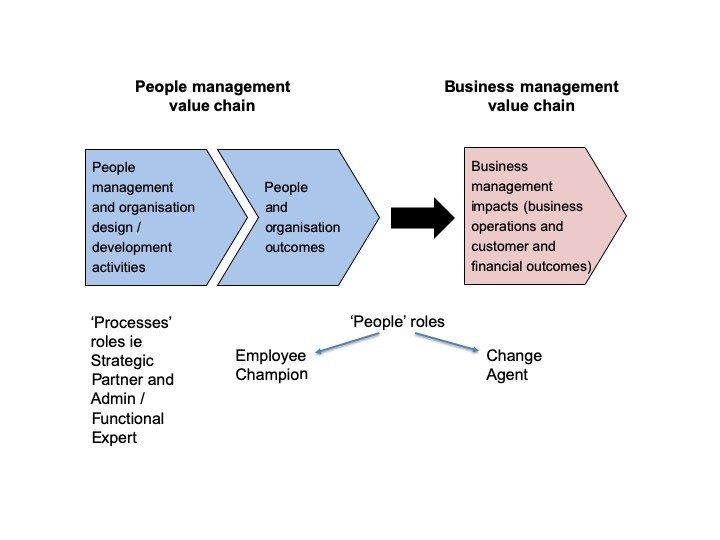
This more specific conceptual model is therefore built upon people management activities, outcomes and impacts, rather than just processes and people. But just as with the traditional conceptual model, Ulrich’s physical model can be shown superimposed on this more specific conceptual model.
Links Between More Specific Conceptual and Physical Models
My next post provides some additional updates to the conceptual model, and I can then show you how the physical model also needs to change.
Article by channel:
Everything you need to know about Digital Transformation
The best articles, news and events direct to your inbox
Read more articles tagged: Featured, HR, Organisational Design


